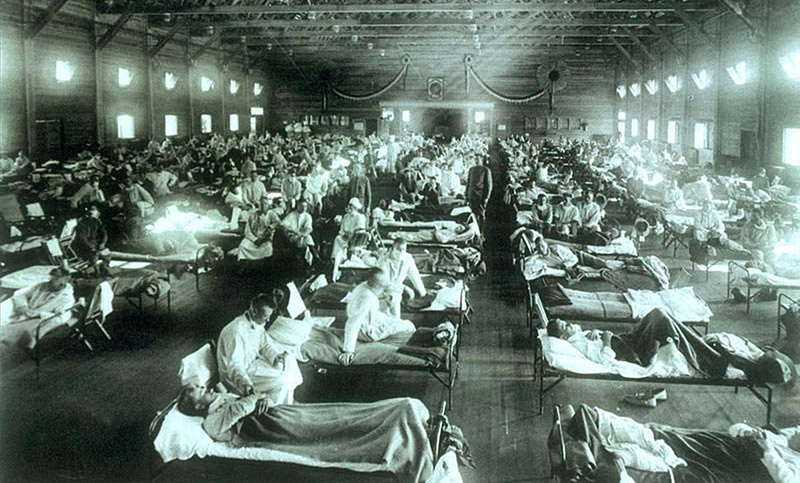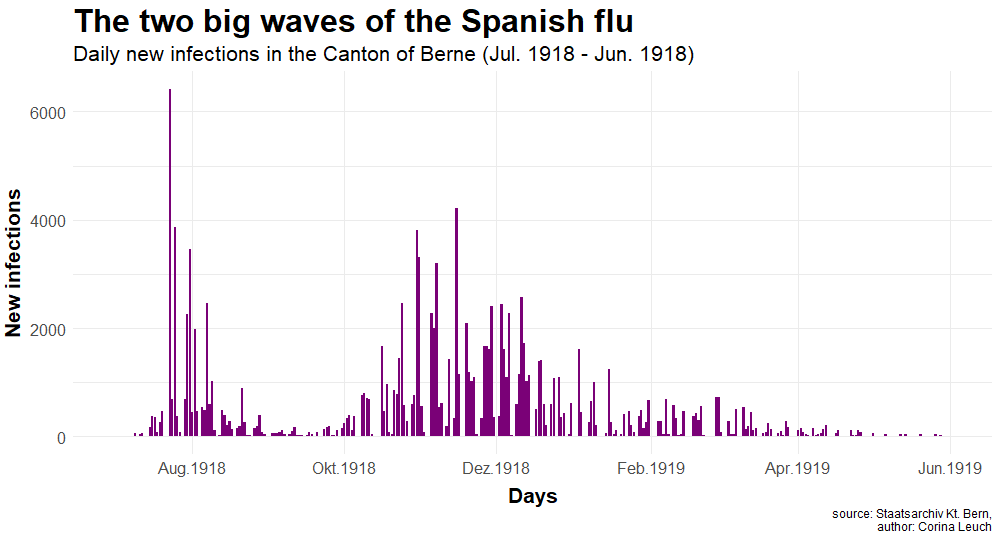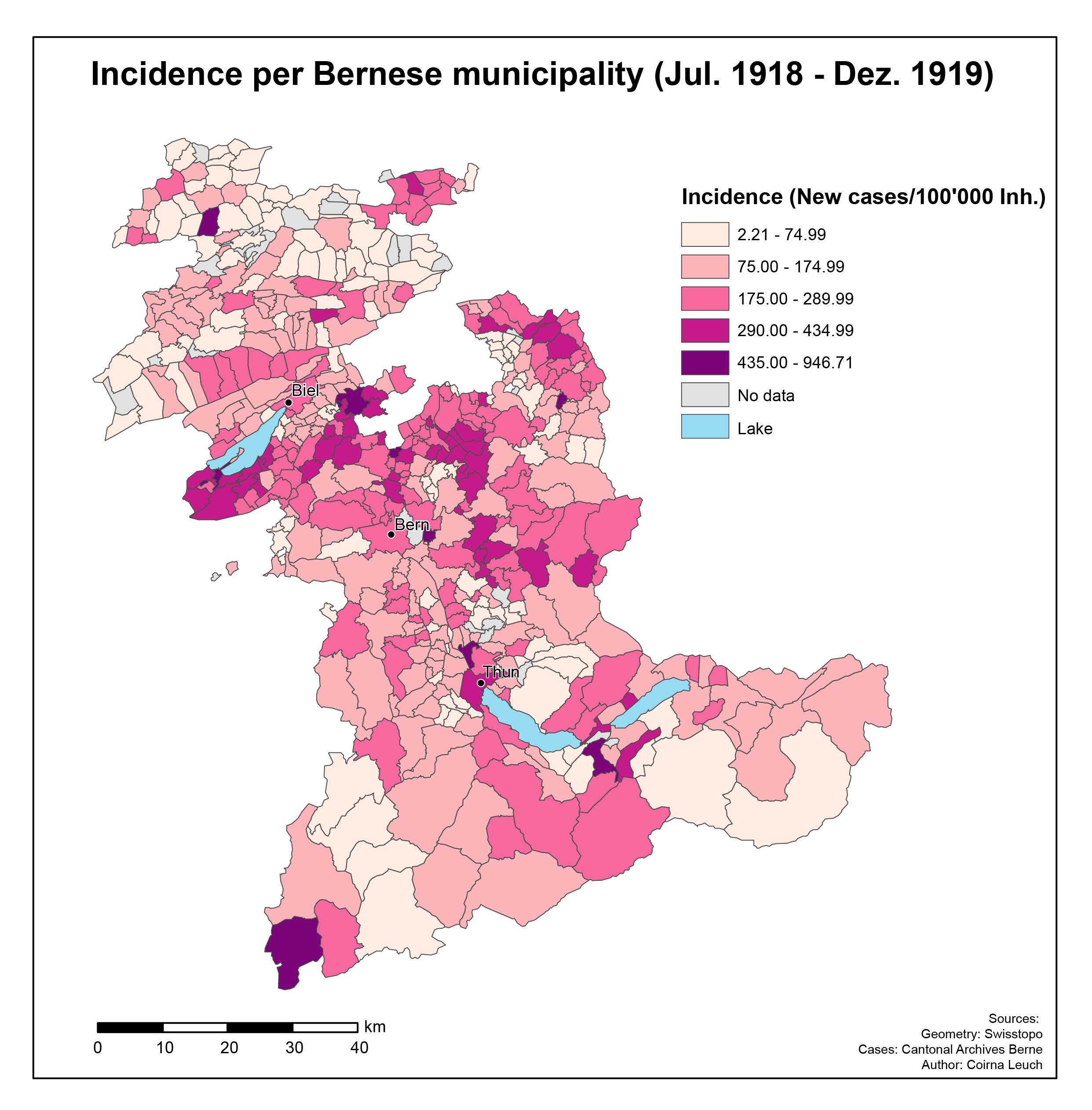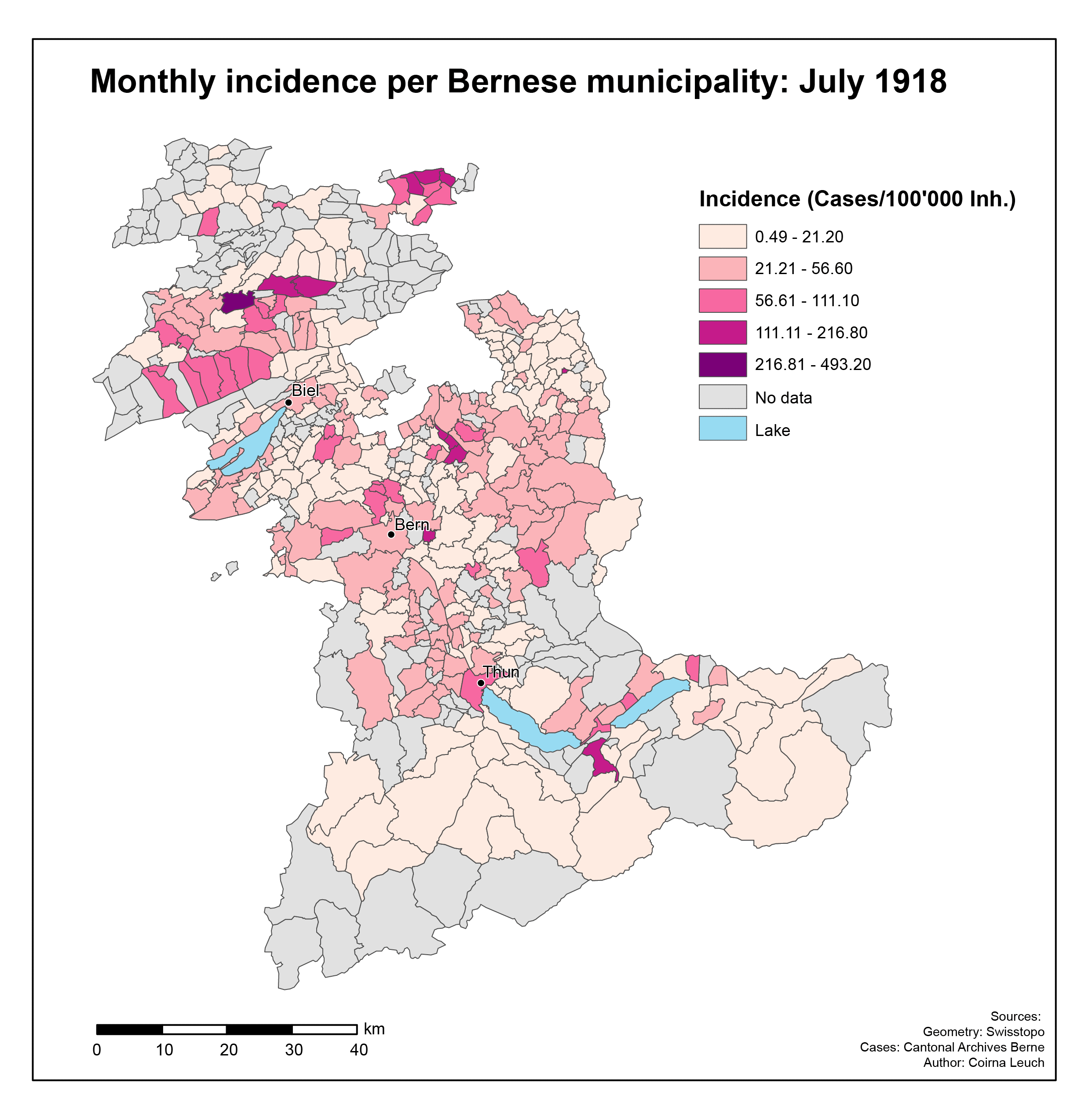#77: Researching a pandemic - during a pandemic
Last autumn, many people could not quite understand the choice of my Master's thesis topic "The Spanish Flu in the Canton of Berne". Three months and a pandemic outbreak later, however, things are quite different. The Master's thesis is still in progress, but it is already clear that spatial and socio-economic conditions play an important role in the spread of diseases.

"The Spanish flu? How is this relevant to our world today?"
"The Spanish flu? How did you even come up with that topic?"
These are just two of the questions I had to answer after I had chosen the topic for my Master's thesis last October. Five months later, I was sitting in my flat giving my concept lecture on Zoom. The outbreak of Covid-19 had brought the world to a halt, the university was closed and all live sessions cancelled. Although no one doubted the relevance any more, people were asking a number of new questions: "Since you know about pandemics, how long do you think it will take for it to be over?", "Will there be a second wave like the Spanish flu, and if so, will it be worse than the first?" Of course, I don't have the answers to these questions either.
During this time, at least I'm one of the lucky ones who are allowed to return to the Irchel campus, where I'm sitting in the infamous "Rüümli" (Y23-G10), together with other students who are currently writing their Master's theses. This gives us a bit of normality again, and apart from a few minor restrictions - such as disinfecting the tables and reserving seats via the room booking tool - a lot of things are running as they were before the pandemic. It is nice to have people around me who are in the same situation, to exchange ideas, to have lunch together or for the occasional ice cream or coffee.
On the tracks of the "mother of all pandemics"
The Spanish flu is commonly described as one of the worst pandemics in the history of mankind and cost about 50-100 million lives in 1918-1920. By comparison, the First World War in 1914-18 claimed about 40 million victims. For my Master's thesis, I obtained the incidence, i.e. the number of newly infected persons, from historical disease data as well as various socio-economic data from the Canton of Berne - including Canton Jura, which was part of the Canton of Berne until 1979. The project is a collaboration between the Institute of Evolutionary Medicine and the Institute of Geography. The aim is to combine this wealth of data to learn more about the spread of the disease. This leads to the following two research questions:
- How did the Spanish flu spread in the canton of Berne?
- What local factors contributed to the spread of the disease?
The work is still ongoing, but the first results are already available.
Extensive data set from the State Archives of the Canton of Bern
The data set consists of 9335 notifications, with a total of 124,712 influenza notifications for the period from July 1918 to the end of 1919 and comes from the State Archives of the Canton of Bern. Doctors were obliged to report influenza from July 1918 onwards; the data are available at communal level. For a few cases, no exact location (2.8% of cases - comments such as "in the whole district") or no exact number of cases (2.1% of cases - e.g. "many cases") could be identified.
The two big waves
The graph of daily new infections paints a familiar picture for the canton of Bern. The pandemic ran in two big waves: a mild spring/summer wave (July/August 1918) and a much worse autumn wave in 1918 (November 1918 - January 1919). One reason could be that large parts of the population were increasingly malnourished and weakened by the war, even though Switzerland was not involved in any fighting.

In Switzerland, the disease tended to spread from west to east, but the exact routes of infection are not well researched. One theory is that the disease was introduced via the Jura by front-line soldiers who were sent home sick, which is why the disease spread explosively in the beginning. As a result, a ban on gatherings was declared at the peak of the first wave and the contagion quickly receded. This ban was lifted only five weeks later however, and the cases increased again: the second wave began.
The second wave proved to be much worse than the first. Although the daily incidence of infection was lower than in the first wave due to the faster reintroduction of contact and assembly bans, the second wave lasted several months and caused many more deaths. A third, much milder wave was observed in the spring of 1919, after which the disease disappeared.
The Mittelland was particularly affected
The spatial distribution of incidence (cases per 100,000 inhabitants) over the entire period does not provide a clear picture. There is a slight tendency for the Bernese Mittelland to be more severely affected than the rest of the canton. In general, it can be said that larger municipalities were more severely affected than small municipalities. There are also some outliers: sparsely populated areas where even a few cases lead to a high incidence.

The disease was introduced from the Jura
If we look at the spread over time, we see that space played a very important role in this. The Jura was more severely affected by the first wave than by the second wave. In the rest of the canton, the second wave was more severe. This would support the theory that the disease was introduced from the Jura. From there it spread across the Mittelland towards the Oberland. The second wave was particularly strong there. After that, a few local hotspots can still be observed before the disease finally disappeared.

Spatial-epidemiological model to provide explanations
These are first descriptive results. The core of the work is to be a spatial-epidemiological model that will explain the spatial spread of the disease in the canton of Bern. For example, the size of households, the proportion of people employed in agriculture, physical variables such as weather or the municipality's connection to the train network could provide explanations. But also health variables, such as co-morbidity with tuberculosis, are likely to have an influence.
And finally, an important goal is to visualise the results in an appealing way so that as many people as possible can be reached with these highly topical findings about a historical pandemic. After all, understanding the spread of Spanish flu can help to better combat future outbreaks of infectious diseases.
Poetry during the pandemic
| "Niene isch Chilbi u niene isch Tanz deheime ums Hus um versuret me ganz. I ha mer scho mängisch der Chopf fasch verheit was ächt no wär z'mache, das Zyt umegeit. […] Drum blieb i doheime. I schicke mi dry u hoffe dä Jammer gang öppe verby. I bi ja nid einzig, s'trifft anderi o, s'isch ume es gwane, - Mi zahmet de scho!" - Lina Wisler-Beck |
No fairs and no dances anywhere,
|
These lines were not written during the Corona lockdown in March, but are an excerpt from a poem written in June 1920. Not much is known about the author, she probably came from the Bernese Oberland. It is an impressive example of what moved people at the time of the Spanish flu and is still relevant today.
Note: This is an interim report from an ongoing Master's thesis. The contents may only be redistributed with the explicit consent of the author.
Corina Leuch